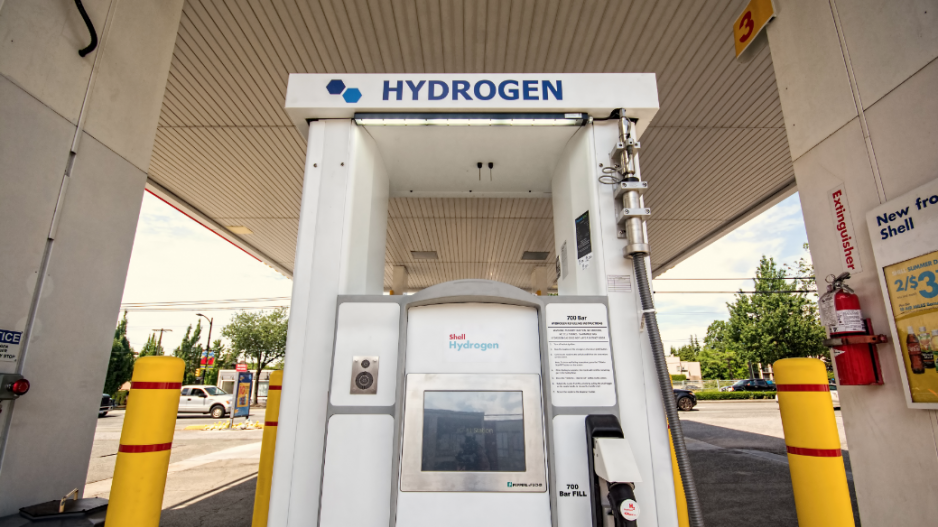The B.C. government unveiled a hydrogen economy strategy Tuesday that is intended to foster innovation and adoption of both hydrogen use, as well as its production.
It includes 63 actions for government and industry to act on in developing a hydrogen economy. It follows the announcement of a federal hydrogen strategy in December.
“As we face the global challenge of transitioning away from fossil fuels, renewable hydrogen will be a critical part of our achieving clean energy and climate goals,” said Bruce Ralston, minister of Energy, Mines and Low Carbon Innovation.
As Ralston pointed out, hydrogen can be used in fuel cells in areas that are more difficult to electrify — heavy duty transportation, for example — and can also be injected into the natural gas grid to low its carbon intensity.
“With our clean energy advantage, abundant natural resources and innovative companies, we are well positioned to attract investment in the growing hydrogen economy, and create new opportunities for British Columbians,” Ralston said.
He said the 2021 budget committed $10 million over three years to help implement the B.C. hydrogen strategy, and BC Hydro recently announced a discounted electricity rate for renewable hydrogen production.
B.C. is a hydrogen technology leader. In addition to Ballard Power Systems and Loop Energy — two hydrogen fuel cell manufacturers — BC Hydro’s Powertech Labs provides testing and some research and development for hydrogen technology.
"More than half of Canada’s companies active in the hydrogen and fuel cell sector are located in B.C.," the B.C. hydrogen strategy notes.
While B.C. has some advantages on the adoption and manufacturing side, it may find itself outpaced by Alberta and Quebec when it comes to producing hydrogen.
The Quebec government is aggressively pursuing green hydrogen production, using its vast hydro power resources, and Alberta is already a hydrogen producer that it poised to dominate in the blue hydrogen production space.
Hydro-Québec recently awarded an engineering contract to Thyssenkrupp, a German company, to build an electrolyzer plant that would produce 11,000 metric tonnes of green hydrogen annually.
And the federal and Alberta governments recently signed a memorandum of understanding with Air Products Canada to build a $1.3 billion blue hydrogen production plant in Edmonton.
Alberta's advantage is that it already produces hydrogen — used in the petroleum industry — abundant natural gas and the Alberta Carbon Trunk pipeline, which is a dedicated pipeline that can be used to transport and sequester the CO2 captured from industry, including blue hydrogen production.
B.C. has both abundant natural gas and hydro power, so it has potential to see investment in either blue or green hydrogen production, or both.
Currently, green hydrogen — produced from water and electricity — can cost four to five times more to produce than blue hydrogen, which is hydrogen made from natural gas with carbon capture and storage. It's expected it will be 10 years before green hydrogen production can compete with blue hydrogen in terms of production costs.
"Production costs for all pathways are heavily dependent on the price of inputs, such as natural gas and electricity," the strategy notes.
B.C. does not have Alberta's advantages when it comes to carbon capture, transportation and storage. The strategy notes that it will need to develop new regulations for CCS in B.C.
"It (CCS) has some challenges in the sense that the costs are not yet economic on a commercial basis," Ralston said.
"Here in British Columbia we have the potential for green hydrogen because of our clean electricity grid. So the opportunity here in British Columbia is for green hydrogen as well.
"But both will go forward together. The development of the blue hydrogen sector, I think, is — given the natural gas resources in British Columbia — an opportunity for British Columbia as well."
The strategy says a range of new codes, standards and regulations will be needed for hydrogen production, transportation and storage, including regulations around CCS.
As for hydrogen technology and adoption, the strategy proposes the creation of regional hydrogen hubs where both production and demand are "co-located," subsidies for fuel cell vehicles and infrastructure, and expansion of the use of hydrogen in industry.
The B.C. government estimates hydrogen use could potentially reduce the province's emissions by 7.2 megatonnes of carbon dioxide equivalent per year by 2050.



